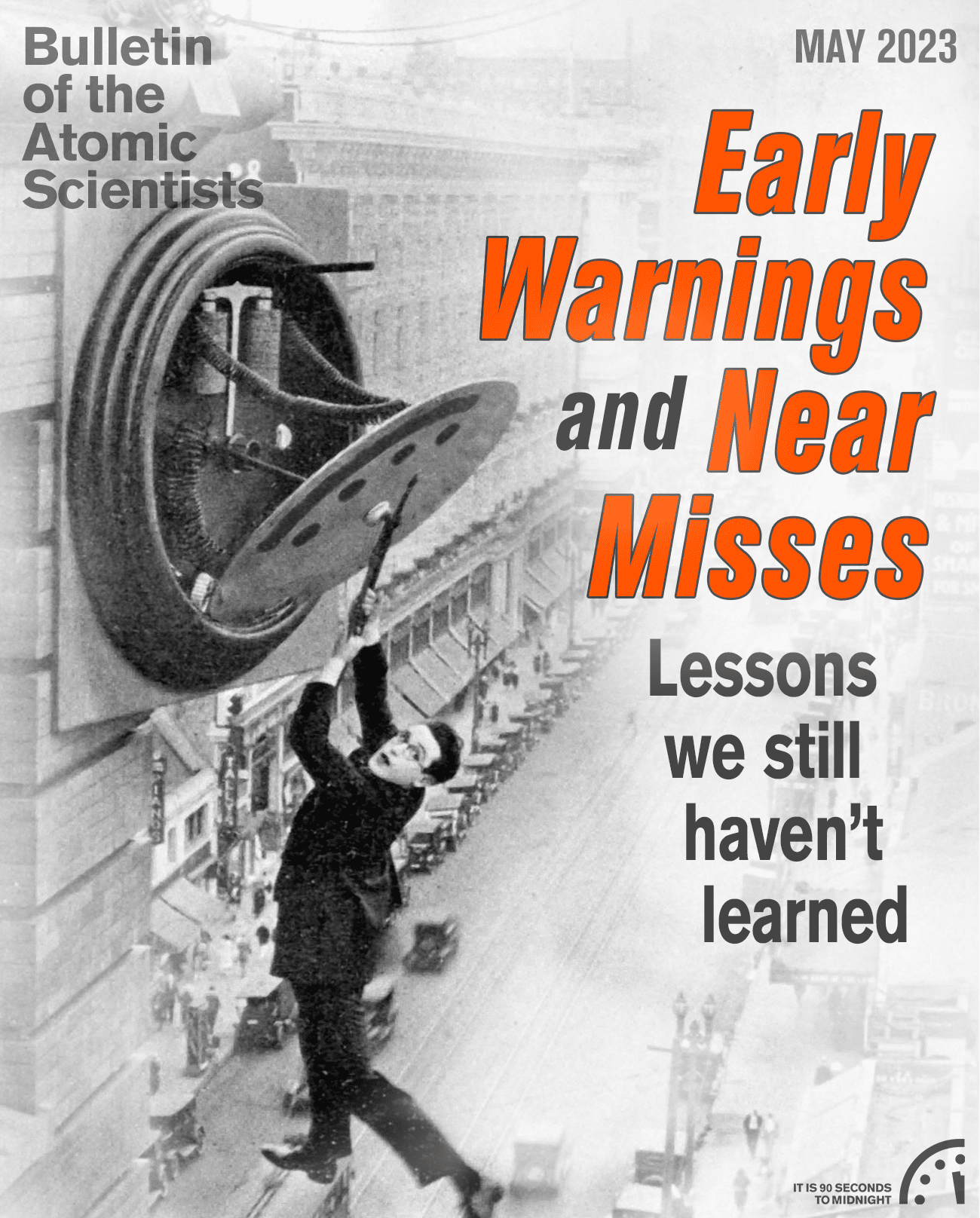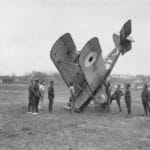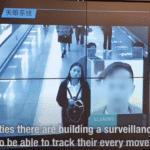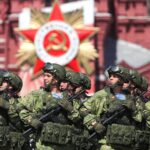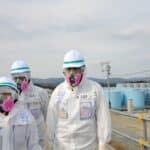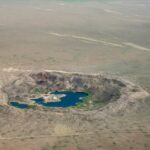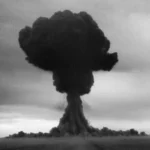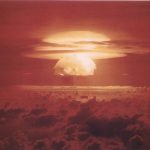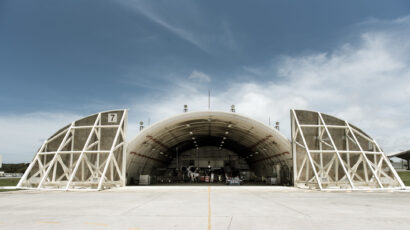Interview with Eric Schlosser: Why we can’t trust the government’s figures about nuclear close calls
By Dan Drollette Jr, May 9, 2023
Image of a missile spiraling out of control during a missile test, from a multimedia traveling exhibit called "The Bomb." https://thebulletin.org/2016/04/nuclear-film-does-not-bomb-on-broadway/
In the world of accidents, close calls, and near-misses, perhaps nothing is more chilling than incidents involving nuclear weapons.
For years, the US military has said that the number of unintentional launches, detonations, thefts, or losses of nuclear weaponry—often referred to as “Broken Arrows”—has been no more than 32.
But investigative journalists such as Eric Schlosser, author of Command and Control: Nuclear Weapons, the Damascus Accident, and the Illusion of Safety, assert that the Pentagon’s list includes inaccuracies and is missing key events. Due to the looseness with which a nuclear weapons accident is defined, there may be hundreds more accidents. In this interview, Schlosser tells the Bulletin’s Dan Drollette Jr what led him to that realization.
More important, the large number of close calls and near-misses shows that no system for safeguarding nuclear weapons can ever be 100-percent effective—meaning that the United States (and other nuclear weapons nations, which have Broken Arrows of their own) can never completely eliminate the potential for catastrophic nuclear error. Says Schlosser: “These are the most dangerous machines ever invented, and we need to reduce the number of them—and eventually get rid of them. But until the day that nuclear weapons are abolished, we need to spare no expense in terms of their safety and their management and take them deadly seriously.”
(Editor’s note: This interview has been condensed and edited for brevity and clarity.)
Dan Drollette Jr: As an investigative journalist, you’ve written on quite a number of different subject areas: fast food, the underground economy, and the history of nuclear weapons systems and accidents involving nukes in the United States…
Eric Schlosser: …and now a book on prisons.
Drollette: What’s the common thread?
Schlosser: I’d say it’s things that are bad for you. Slaughterhouses, nuclear weapons, and prisons are all things you try to avoid.
It was actually while researching my fast-food book that I became interested in the topic of what ultimately became Command and Control—my book on nuclear weapons, accidents, and safety. The very first pages of my fast-food book describe how the Domino’s delivery guy would drive past all the security checkpoints to the entrance of the underground bunker at the Cheyenne Mountain Complex [the military base at the heart of the nation’s early warning system for tracking nuclear missiles], and drop off pizzas for the people inside. And I became really interested in the US Space Command and the Air Force Space Command, which are headquartered in Colorado Springs.
This was about the year 2000—pre-9/11—and I couldn’t believe they let me go to all these bases. I spent time at the Air Force Space Command, I spent time at Kirtland Air Force Base. And a lot of the people I met who were with the US Space Command were former [nuclear] missileers. It was just a logical career path for them to go from the missile corps into the Space Command. They started telling me stories about nuclear weapons during the Cold War. I became really intrigued, especially after one of them told me the story of the Damascus accident—the explosion of a Titan missile in its silo in Damascus, Arkansas, in 1980.
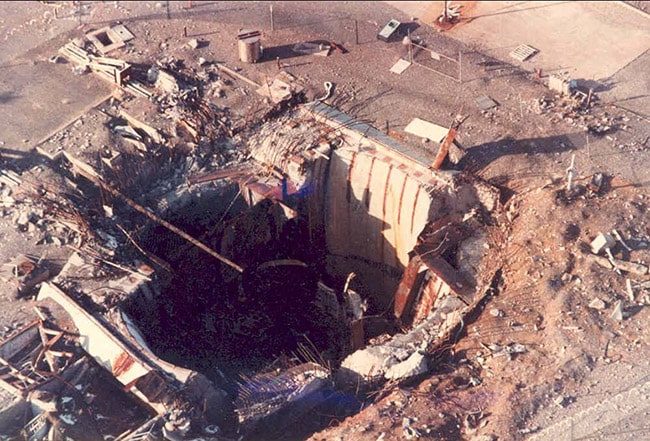
I thought that the story of these nuclear close calls was a really compelling one, and an important one to tell. I felt like the whole issue of nuclear weapons had been so forgotten, and I wanted to remind people that these things are still out there, ready to go. They’re not some archaic thing only of historical interest—although I think that these days, there’s much less of that amnesia, what with the war in Ukraine, and Putin’s nuclear saber-rattling.
Drollette: I think you’re right; the Bulletin now gets more readers in a month than it used to get in a whole year, compared to when I started here.
Schlosser: So literally the audience has gone up 12-fold? That’s good to hear, because what’s so unsettling to me is how the foundations are now leaving this space. A number of large foundations used to give significant funding to the anti-nuclear weapons community. But most of them have pulled out.
Which is a shame, because there really needs to be the kind of focus on nuclear weapons that there currently is on climate change. A whole new generation needs to understand these threats—which was one of the goals in my writing about nuclear weapons and Broken Arrows.
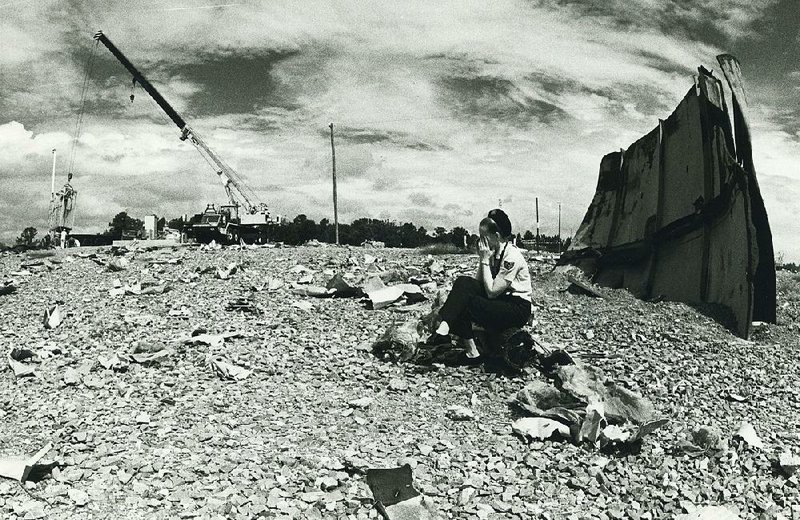
Drollette: Speaking of which, can you define your terms? My understanding is that the phrase “Broken Arrow” is generally used to refer to unintentional launches or unintentional detonations. But things gets fuzzy when talking about fires or accidents, or thefts or losses—such as what if the US military can’t account for a nuclear weapon’s whereabouts, or misplaces it. And while I understand that we in the States use the phrase to refer to just US nuclear weapons, I’m not sure what that means for US weapons based outside the geographic boundaries of the country.
Schlosser: Well, this is where things get interesting. Because there’s the US Defense Department definition of a Broken Arrow, and then there’s the colloquial understanding of what it is. A lot depends on how you define a Broken Arrow, and what the term takes in and what it leaves out. There can be a lot of near-misses and close calls that don’t make the official list. According to the official sources, there were 32 Broken Arrows that occurred between roughly 1950 and 1980, with none since.
So, to answer your question, the US Defense Department uses “Broken Arrow” to mean a nuclear accident with a US weapon that caused the unauthorized launch or jettisoning of a nuclear weapon, a fire, an explosion, a radioactive release, or a full-scale detonation.
A “Bent Spear” is one step below a Broken Arrow and refers to damage to a weapon, without any [risk of] harm to the public or detonation.
And an “Empty Quiver” is loss, theft, or seizure of a nuclear weapon.
While if you go to a source like the Atomic Archives, they define a Broken Arrow as “an unexpected event involving nuclear weapons that result in an accidental launching, firing, detonating, theft, or loss of the weapon”—in other words, they lump some of the things in these different categories together.
And places like the National Security Archive note that there are dangerous incidents that don’t fit easily into any one category, such as when lax security at a NATO nuclear weapons depot in the Netherlands in 2014 allowed activists to breach the perimeter. Now what would you call that —a Bent Spear, an Empty Quiver…?
Or, to give another example from the National Security Archive, the US Air Force mistakenly shipped six nuclear-armed cruise missiles in 2007 from an air base in North Dakota to an air base in Louisiana—and no one realized that they were there, so these missiles just sat unguarded for several hours. Technically, that wasn’t an accident, but it definitely was a mistake, and one that could have had very dangerous ramifications. They weren’t lost, they weren’t stolen, but they were in the wrong place, unaccounted for and unprotected.
Drollette: That’s really interesting to me, because we recently published a piece written by someone affiliated with the Nuclear Emergency Support Team—sort of like a SWAT team for anything nuclear-related, a federal government agency that’s one of the first to respond whenever there’s a nuclear incident or nuclear blackmail. And the author was adamant that there have been 32 Broken Arrows, and only 32. And he was equally firm that the last Broken Arrow was in 1980.
Schlosser: That’s only if you follow the Defense Department’s list. (See Figure 1 below.)
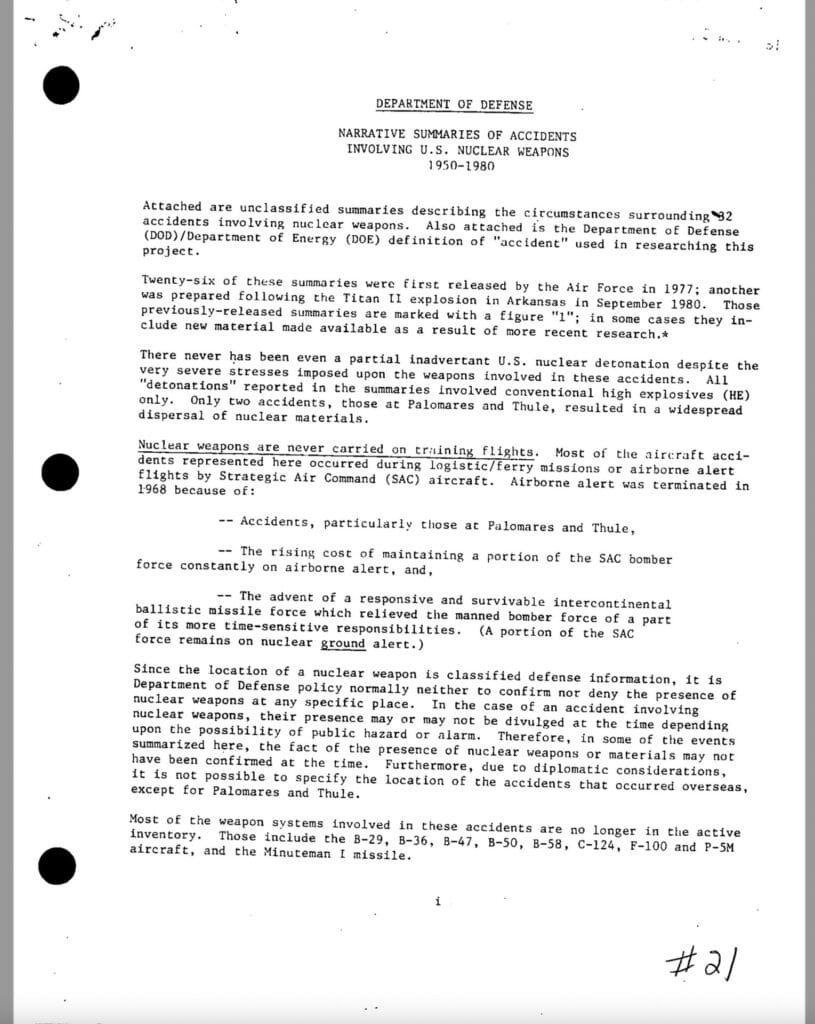
Look, to give them their due, there are 16 accidents on that Defense list that really could not have led to a nuclear detonation—which, let’s face it, is the bottom line. In some cases, the bombs were not fully assembled; in other cases, there was no nuclear material involved—which was what happened, for example, when there was an explosion at an explosives-storage igloo in Medina, Texas.[1]
The same with a similar situation at Manzano Base, New Mexico—again, no nuclear core had been previously inserted. But those incidents are still included on the Pentagon’s list as Broken Arrows.
Now, I guess you could argue that including those incidents is to the Pentagon’s credit—they really didn’t have to include them on their list of Broken Arrows, but they did.
But it goes to show how nebulous these things are, and how arbitrary the definitions are. Under the Pentagon’s definition of a Broken Arrow, if a Jupiter missile was hit by lightning, that technically would not be considered a Broken Arrow. [Editor’s note: The Jupiter was a medium-range, ground-launched, liquid-fueled ballistic US missile used in the 1950s and 1960s, and roughly the size of most modern intercontinental missiles.]
But that would certainly be more likely to cause a full-scale detonation than just jettisoning a weapon into the ocean that doesn’t even have a nuclear core in it—which is the case with one of the other Broken Arrows on that official list.
But more than the questionable semantics, the really troubling thing is all the accidents that could have led to a detonation but didn’t make it to the list.
Drollette: Such as?
Schlosser: While I was researching Command and Control, I obtained some newly declassified documents through the Freedom of Information Act. One of them, titled “Accidents and Incidents Involving Nuclear Weapons,” lists about 1,000 accidents and incidents, just from July 1957 to March 1967—the period covered by the document.
To give you an idea of the significance of what was on that list, Bob Peurifoy and Bill Stevens, the two leading safety engineers at Sandia [National Laboratories] during the Cold War, had never seen this document until I shared it with them … and they had never heard about many of these accidents and incidents, and reading the report greatly upset them.[2]
I am sending you the 225-page document; the highlighted passages will give you a sense of the daily, routine screw-ups and mistakes that could lead to a BWF, an acronym colloquially used at the labs to denote an accidental detonation—a Blinding White Flash. (See Figure 2 below.)
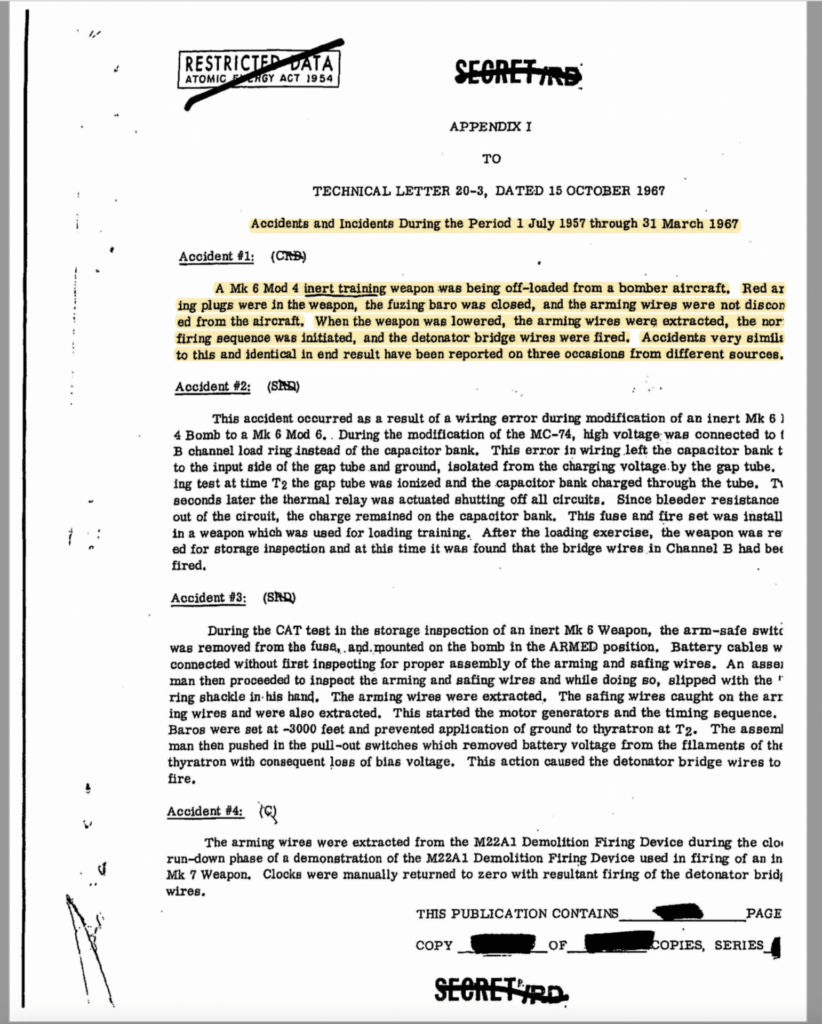
Again, some of them are very, very mundane and trivial. But some of them are really serious.
Drollette: Let’s talk about the more serious cases.
Schlosser: There was one that I revealed for the first time, which I got from a Freedom of Information Act request. It happened with a US military plane in the UK, just a few days before John F. Kennedy’s inauguration in 1961, and it was much more dangerous than some of the things on that official Pentagon Broken Arrows list.
The underwing fuel tanks of an Air Force F-100D fighter plane were mistakenly jettisoned when the pilot started the engines. The plane was on alert at Lakenheath Air Force Base in Suffolk, England. The fuel tanks from the fighter jet hit the runway, ruptured, and fuel ignited. And a Mark 28 hydrogen bomb mounted beneath the plane became engulfed in flames. Fortunately, firefighters were able to get to the plane and put out the fire before the high explosives in the hydrogen bomb could detonate.
Now that should be a Broken Arrow. But because this occurred at an overseas Air Force Base, the United States and Great Britain both denied that it had ever happened.
And that was so much more of a Broken Arrow than the 16 accidents on that list that didn’t even involve a fully assembled bomb—yet they’re on the list.
When things happen overseas, they’re easier to sweep under the rug.
Drollette: What do you, Eric Schlosser, think the real number is?
Schlosser: There’s no way to say, other than “a lot.” One of the documents I got through the Freedom of Information Act said that a rocket-propelled version of the Mark 7 nuclear bomb was unloaded, fully armed, with its X-Unit charged, from a US Navy plane in the spring of 1960. Now when an atomic bomb has a fully charged X-Unit, that means that you’re ready to detonate: It’s fully loaded up with electricity that just needs to be dumped into the detonators.
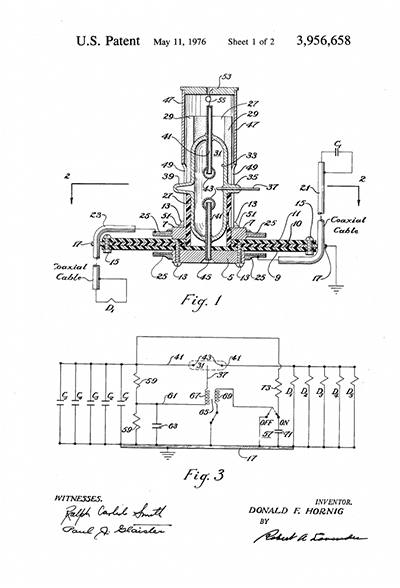
So, you’re at a very delicate moment when those X-Units are fully charged. You don’t want lightning anywhere nearby, no short circuits, no glitches with the arm/safe and ready/safe switches, you don’t want any wiring faults, you don’t want to drop nuclear weapons from any height—especially the older models. With some of these older weapons, when the X-Unit’s charged, even dropping one from a height of six or seven feet could lead to a detonation.
And you never want the X-Unit fully charged, unless you’re ready to detonate the bomb.
Preventing electricity from getting to the detonators is the bedrock of nuclear weapon safety.
And, you know, during the Cold War, some ground crews at NATO bases were very casual about removing atomic bombs from planes, pulling out wires, and inadvertently charging up the X-Unit. There were quite a few cases of weapons that could have been detonated in that way. The physicist [and former director of Los Alamos National Laboratory] Harold Agnew told me that while visiting a NATO base in 1960, he was amazed to see a group of weapon handlers pull the arming wires out of a Mark 7 atomic bomb while unloading it from a plane. When those wires were pulled, the arming sequence began.
In those days, the nuclear weapons in the NATO stockpile were often old and poorly maintained; the Mark 7 atomic bombs that NATO fighters carried dated back to the Korean War almost a decade earlier, and a Mark 7 could be detonated by so many things: its radar, its barometric switches, its timer, or just by falling a few feet from the airplane onto the runway.
Those routine accidents and mistakes were rarely jotted down and recorded. There’s no way to actually say how many close calls we’ve had. The bottom line is that when it comes to 32 official cases of Broken Arrows, that 32 number is completely arbitrary. And there have been hundreds of serious incidents, if not thousands.
Drollette: It makes you wonder how we’ve managed to not blow ourselves up.
Schlosser: Well, the design skills of the engineers and physicists at all those national labs helps to explain why we’ve never had an accidental detonation. Plus, there’s the overall military discipline of the Air Force, the Army, and the Navy.
But there’s also a fair amount of luck—sheer luck—that so far has prevented an accidental detonation of any size. And the way it works is, the more accidents you have, the more likely you are eventually going to get an accidental detonation.
Now, I think the weapons today are far safer than they’ve ever been; the safety mechanisms are far more advanced.
And yet, you know, the probability of an accidental detonation is still greater than zero. And whenever the odds are greater than zero, that means it’s still going to happen. It may be a million years from now or it may be tomorrow, but it will happen. These may be low-probability events, but low-probability things happen all the time.
For example, an architect classmate of mine was walking down a street in New York City when part of the facade of a building came off, hit her, and killed her. And she knew the architect of that building. Now, what are the odds of that? They’re incalculably small.
The only weapons that are entirely safe are the weapons that have the nuclear core stored at a separate location, so that they need to be assembled before they’re ready to go. As soon as they’re assembled—once there’s a nuclear core surrounded by high explosives—they’re never perfectly safe.
You know, the Goldsboro accident in North Carolina was perhaps the closest that we’ve come to a full-scale detonation on American soil.[3] That accident is on the Pentagon list of Broken Arrows, by the way. And it definitely belongs there.
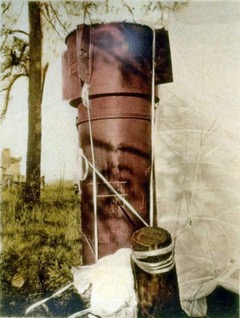
At Goldsboro, a hydrogen bomb was dropped from a plane that was breaking apart in mid-air. One of the hydrogen bombs it was carrying went through all of its arming steps, except for the last one—the ready/safe switch.
The rudimentary ready/safe switch that prevented a full-scale detonation was not anything that you would want to have protecting you from a nuclear catastrophe. I mean, it worked in that case. But there were other ready/safe switches identical to that one which were later found to be defective. And it was such a simple technology. So, that 1961 incident was about as close as we’ve ever come to a full-scale detonation on American soil.
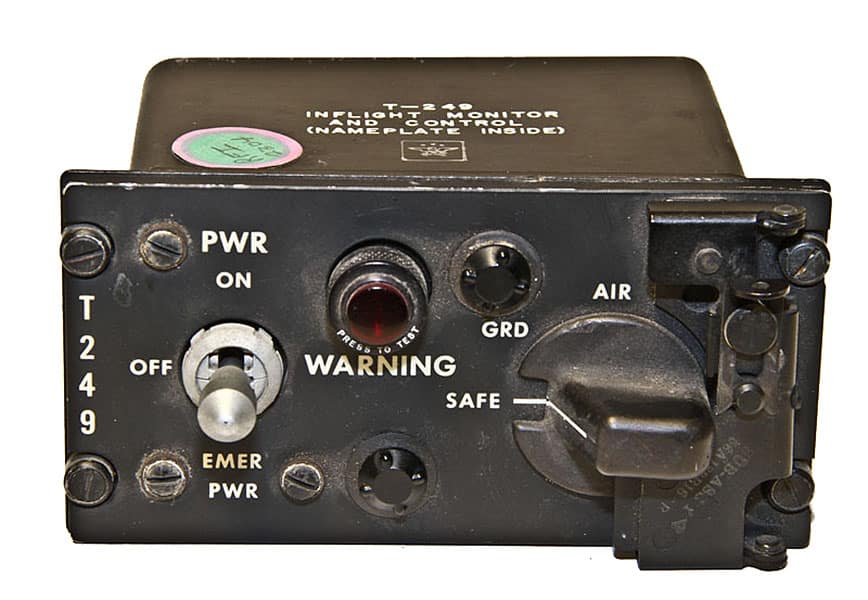
Drollette: And we’re just talking about American weapons.
Schlosser: Right, we’re not talking about close calls or near-misses with Russian weapons, British weapons, French weapons, or what might have happened with weapons in India, Pakistan, North Korea, China… Worldwide, we have no idea how many nuclear-weapon accidents have occurred.
I mean, there have been so many American incidents that were simply never reported. A weapons designer told me about the X-Unit being charged accidentally at an airbase in Florida. The technicians who were working on an atomic bomb were terrified that all of a sudden this thing would go off. Who knows how many other accidents like that are out there—things that just were never reported and were so much more serious than losing a nuclear weapon that doesn’t even have a nuclear core inserted in it.
Who knows whatever might have happened in Russia, especially during the Soviet era? We can be sure it cannot have been good, given the massive explosion at their nuclear processing facility in Kyshtym in 1957—not to mention those old Soviet nuclear subs that were abandoned above the Arctic Circle, where they’ve been sadly leaking ever since.
I would bet that there must have been a number of Broken Arrows in the Soviet Union. Just look at their high rate of industrial accidents; I think you can rightfully assume that the higher the rate of industrial accidents, the greater the difficulty in managing complex technology and complex technological systems.
That’s a good proxy for giving you an idea of how likely any nuclear state may be to have close calls with their nuclear weaponry.
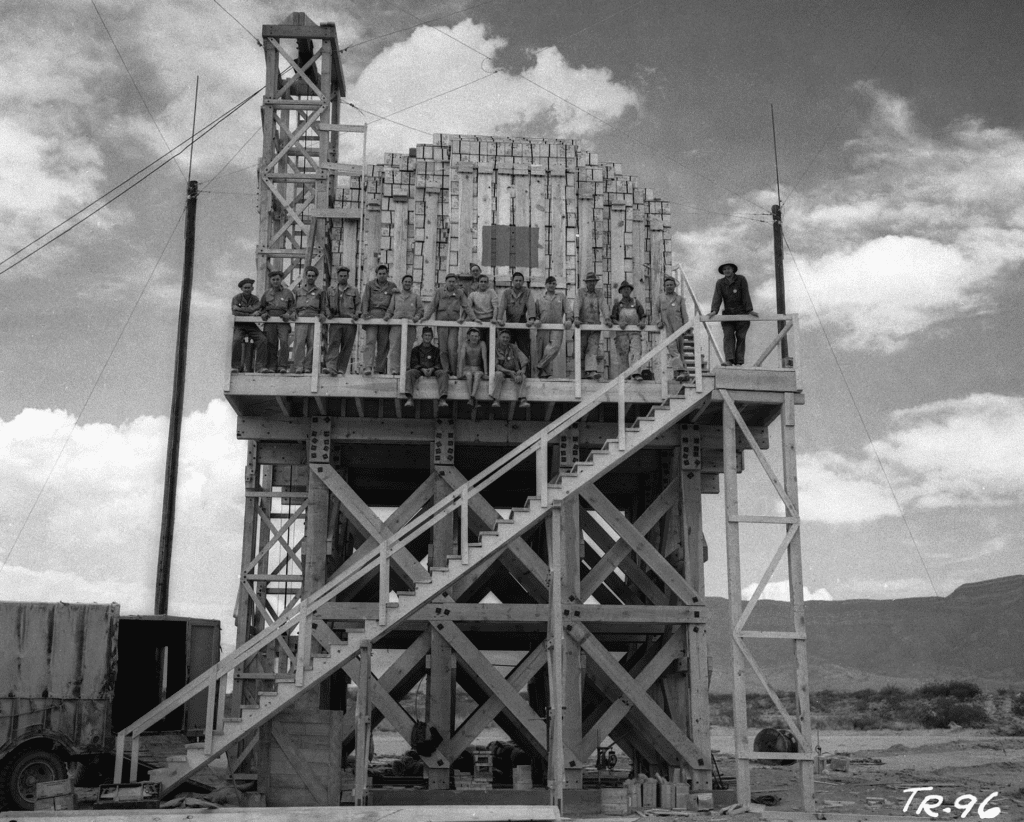
Drollette: What do you think is the takeaway from this discussion about the nature of nuclear weapons, Broken Arrows, Bent Spears, Empty Quivers, industrial accident rates, and close calls that never got recorded?
Schlosser: These are the most dangerous machines ever invented, and we need to reduce the number of them—and eventually get rid of them.
But until the day that nuclear weapons are abolished, we need to spare no expense in terms of their safety and their management and take them deadly seriously.
You know, one of the incredible things about that 2007 incident Barksdale incident is that people could even possibly forget that there were half-a-dozen nuclear cruise missiles loaded on a plane parked on a runway—those thermonuclear warheads were left just sitting there, unguarded, overnight. So we need the most rigorous managerial standards applied to our arsenal.
Drollette: Any last comments?
Schlosser: We need to always maintain a sense of humility about our creations, and about our ability to manage them.
The safer you assume something to be, the more dangerous it’s becoming. So you have to maintain a healthy level of anxiety about what’s happening with this technology.
And safety improvements, you know, usually happen after accidents—especially after there was public knowledge about these accidents. When bureaucracies are able to keep things secret, there’s often less accountability and less pressure to change.
This is especially true with nuclear weapons, which by their very nature face the always/never dilemma.
Drollette: The always/never dilemma?
Schlosser: It means that from the military point of view, you always want the weapon available available for immediate use. But you never want the weapon to detonate accidentally, or
to detonate through unauthorized use, or to be stolen.
And so, the design criteria for the “always” part of the equation sometimes conflict with the design criteria for “never.” And that creates an inherent tension. For example, if you had nuclear weapons designed in such a way that the nuclear capsule was stored outside of the warhead, there would be no risk of an accidental detonation—but then it would take you a quite a while to use them, because you’d have to install the nuclear capsule and close up the warheads first. So, the “always” comes at the expense of the “never,” and vice versa.
Drollette: Anything else?
Schlosser: My aim in writing Command and Control was not to expose any classified information. It was to really provoke debate and discussion of the most dangerous machines ever built.
And like all machines, they can go wrong.
Endnotes
[1] On November 13, 1963, three civilian contractors were working with beach ball-sized spheres of high explosives leftover after the radioactive fissile material known as “pits” had been removed from the warheads of dismantled Mark-7 nuclear bombs at Lackland Air Force Base’s Medina Annex, outside San Antonio, Texas. These spheres were being unloaded for long-term storage inside heavy-duty steel and concrete, garage-like hangers known colloquially as “igloos.” According to a November 2020 article by David Wood in Texas Monthly: “It seems likely that a detonator was accidentally bumped and then ignited, quickly setting fire to the sphere of highly explosive TNT and uranium metal.” In less than a minute, the fire that had started with the ignition of one sphere had ignited the other 209 spheres in the igloo, setting off a tremendous detonation—but because the radioactive pits had already been removed and stored elsewhere, there was no nuclear yield, meaning there was no nuclear explosion and no scattering of radioactive material. “The TNT itself was enough to cause a massive explosion but not the nuclear nightmare that so many feared.”
[2] Robert L. Peurifoy worked at Sandia Labs for 39 years, serving as director of nuclear weapons development. Bill Stevens was an engineer who served as the first head of Sandia’s nuclear safety department. “Both men were shocked when they realized how vulnerable the nation’s nuclear weapons were to accidents” says this PBS American Experience episode.
[3] On January 23, 1961, fuel began leaking from a B-52 bomber carrying two thermonuclear Mark-39 nuclear weapons, and the plane began to break apart mid-air over Goldsboro, North Carolina. As the pilots lost control of the aircraft, both of the bombs fell from the B-52 as it was breaking apart. According to Eric Schlosser, the parachute of one bomb opened, as intended, and that bomb went through all its arming steps except one, and then landed in a tree. Meanwhile the parachute of the other bomb didn’t open, so it didn’t go through any arming steps and fell straight down into the mud.
The then-US Defense Secretary, Robert McNamara, told Pentagon officials in 1963 in a top-secret document, now de-classified, that “by the slightest margin of chance, literally the failure of two wires to cross, a nuclear explosion was averted.”
Together, we make the world safer.
The Bulletin elevates expert voices above the noise. But as an independent nonprofit organization, our operations depend on the support of readers like you. Help us continue to deliver quality journalism that holds leaders accountable. Your support of our work at any level is important. In return, we promise our coverage will be understandable, influential, vigilant, solution-oriented, and fair-minded. Together we can make a difference.
Keywords: Broken Arrows, accidents, close call, command and control, nuclear weapons, safety
Topics: Nuclear Risk, Nuclear Weapons


